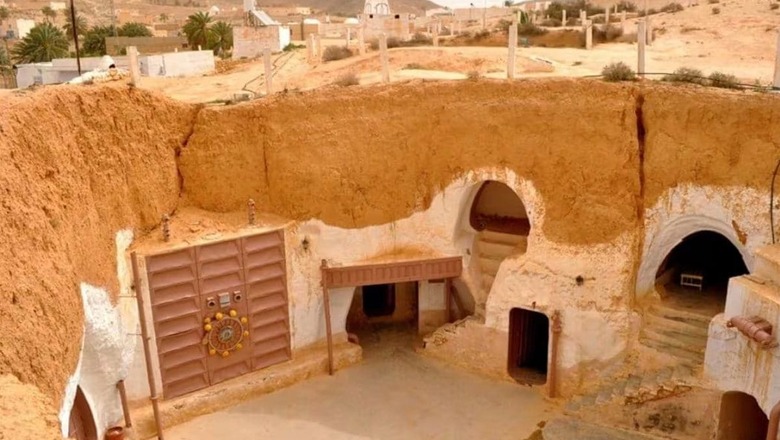
views
Historical accounts and logistical reports often mention bunkers, secret rooms, tunnels and underground chambers as refuge options during times of danger. In the arid valleys of Djebel Tahar in southern Tunisia, there’s a small town named Matmata, where Arabic-speaking Berber people reside. Unlike coastal cities, Matmata is inland, yet its unique geography has made it notable in the context of shelter and protection during challenging times.
The whereabouts of Luke Skywalker’s house in Star Wars are familiar to every fan, as these scenes were filmed in Matmata, Tunisia. However, the traditional structures in Matmata face a threat due to the migration of urban residents, putting the unique heritage of these locations at risk.
The Berbers, primarily involved in agriculture, encountered challenges adapting to the arid conditions of Matmata, Tunisia, upon migrating from Arabia. To cope, they pioneered a unique housing method by excavating deep circular pits in the soft sandstone using simple tools. These pits served as the foundation for underground chambers, forming the structure of their homes.
The distinctive troglodyte construction provided relief from daytime heat. Unfortunately, in the 1960s, heavy rains and floods caused damage to these underground dwellings. Today, these homes have undergone modifications, integrating modern amenities to adapt to the changing environment.
In each backyard of these homes, there’s a connection to a courtyard crucial for underground houses, facilitating the inflow of fresh air. The courtyard serves as a central hub for family activities and social interactions. In Matmata, reaching the terrain involves leaping from the step-like structures on the walls of the subterranean houses. The city and its Berber inhabitants experienced advancements and modern amenities as part of Tunisian President Habib Bourguiba’s efforts to modernize the country.
The Berber kingdoms faced suppression during the Arab conquests in the 7th and 8th centuries CE, initiating a cultural and linguistic assimilation known as Arabization. This process influenced the Berber population through the spread of the Arabic language and Arab culture. Consequently, Berbers adopted Arabic as the primary language and underwent conversion to Islam.
















Comments
0 comment